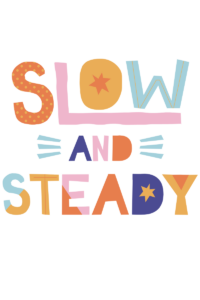One of the most common questions I get from parents and teachers is “What are some good math apps I can use with my kid/student?” There are thousands of math apps available, so I could see how it’s challenging to sort through which ones are good and which ones aren’t? Many apps focus on speed and fact recall.
An example of one is how many addition facts you could get through in a minute. This is just a virtual version of timed tests and flashcards. Check out my blog- Timed Tests on why these tests aren’t useful for students. I NEVER recommend these types of apps to teachers or parents. Math is not about speed.
There are several apps that I do recommend. I’ll go through some of those.
1. BrainingCamp
This company offers virtual manipulatives. The reason why I love virtual manipulative apps is that students can take the hands-on lessons they are doing in school and practice them at home with their parents.

This app offers base ten blocks, color tiles, Cuisenaire rods, fraction circles, pattern blocks, place value disks and so much more. You could buy all these virtual manipulatives individually or in a bundle. I chose to go with the bundle because you could use some of these tools all the way from Pre-K to Grade 5.
2. A Math Learning Center
These apps are quite similar to the products that BrainingCamp offers. It does have fewer options. However, what makes these apps stand out is that they’re free. I believe they would have to be downloaded individually.

Those are two of my favorite virtual manipulatives apps. You’ll notice that neither one asks students to answer questions. There is a reason for that. One of the best things you could do with your children and students is to have them explore content. It’s also essential for students to use tools in ways that fit them best. You may have one way of solving a problem, I may have a completely different way. These tools offer students variety.
Math is different now. It’s hands-on and interactive. These tools will help students investigate math concepts at a deeper level.
3.Bedtime Math
I love this app! It provides you with a story that you could read really at any time even though its called Bedtime Math. After the story, it gives you three math situations that you can answer. The questions go from easy to hard. My son and I look at this site before bedtime. He really challenges himself to see how many questions he could get done. The math and literature connection is terrific. Teachers you could use this as part of your ELA block with a Math extension. It just promotes that math is everywhere. Another bonus is that this app comes in Spanish as well.

4. Greg Tang Math
Chances are your child has used this app in school or at home already. I like this app because of its versatility. It addresses logic games and puzzles. There is a literature component linked to Greg Tang’s books. And lastly, there’s a word problem generator. Teachers this is great to use and you can modify them to create numberless word problems. Parents, this tool is excellent for you as well, in case your child needs practice with word problems.

Those are just a couple of apps I would recommend to classroom teachers and parents.
We don’t want math to feel like this isolated subject you only do at school. These apps are a great way to connect what happens in school and at home. It helps with going from math anxiety to math zen.
I want to end on this note. John Stevens from Table Talk Math states in his book “The best ‘app’ our children can access is quality interaction with someone at home.” I couldn’t agree more with this statement. YOU are the best resource for your child/student.
For more activities to do at home check out:
- Math Before Bed Website
- Math Before Bed Book
- Table Talk Math
- Bedtime Math
Want to check out more?
MEMBERSHIP SITE:
https://zennedmath.com/online-courses/
FACEBOOK GROUP: Zenned Math Teachers
https://www.facebook.com/groups/zennedmathteachers/
YOUTUBE CHANNEL: Zenned Math
https://www.youtube.com/channel/UC5njH_5LoK6G67BvZecGfnw?
WANT ME IN YOUR INBOX? Sign up for my newsletter
https://view.flodesk.com/pages/5efc876dcaabca0028b95eb5
DISCLAIMER: Some links included in this blog might be affiliate links. If you purchase a product or service with the links that I provide, I may receive a small commission. There is no additional charge to you!

